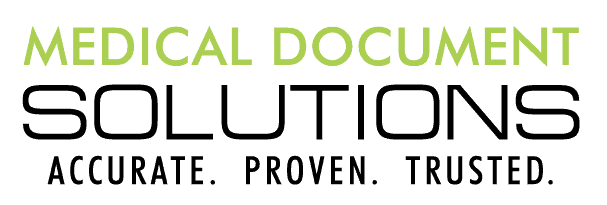Over the past decade, Baptist Health, like many health systems across the country, has gone through a period of rapid growth. This leading health system, with more than 300 points of care across the state of Kentucky, was struggling with a lack of a common system infrastructure — and a handful of different electronic health record (EHR) systems that hindered provider communication, system efficiency and access to patient medical records. Jonathan Craft, Operations Manager for Baptist Health Medical Group, the system’s provider network of more than 1,000 physicians, said the need to migrate to a single EHR platform was a “no-brainer.”
“In order to manage access and security, we needed to make the move,” he said. “But these different physicians and physician groups maintained large patient panels in their original EHRs. Moving them to a new system would create immediate inefficiencies in an already strained system, significantly affecting each provider’s productivity. We realized this was something we needed to address right off the bat.”
Mark Masters, an administrator at a large cardiology practice, as well as President and Chief Executive Officer at MDabstract, said those concerns are right on target. Time-motion studies suggest that physicians spend hours each day, sometimes even up to four hours or more, interacting with the EHR instead of concentrating on more complex clinical tasks and patient care. 1, 2 And if EHR-related tasks are this cumbersome in a familiar system, Masters said, imagine what happens when you migrate to a new one.
“Providers expect to open up a record in the EHR and see exactly what they need to diagnose and treat a patient,” he said. “Without that information, a provider’s effectiveness suffers. When we move providers to a new EHR, making it harder for them to access what they need, we affect their productivity and make it that much harder for them to do their job — which is to provide the highest quality care to their patients.”
JONATHAN CRAFT
OPERATIONS MANAGER | BAPTIST HEALTH MEDICAL GROUP
Masters adds that these obstacles not only increase the likelihood of physician burnout and potential patient safety issues — they can also affect a healthcare organization’s
bottom line.
“You can’t ignore that there is a big financial piece involved with provider productivity,” he said.
“When you move to a new EHR, there can often be a staggering drop in daily patient volume.”
When physicians can’t immediately access the data they need, it can lengthen each patient visit, reducing the number of patients that can be seen each day. And as that number of patient visits drops over time and across multiple providers, it directly affects billing and reimbursements — and the overall financial health of your healthcare organization. This was a risk Baptist Health wasn’t willing to take, said Craft.
“When you are a large system, with a large patient panel, you have a responsibility to your community,” he explained. “If you need to be able to see 40 patients a day, but your migration means that providers can only handle 20 patients each day, you are in a serious danger zone. For the sake of our providers and our patients, we couldn’t let that happen.
AN INTEGRAL PART OF A MIGRATION STRATEGY
When Baptist Health Medical Group announced plans for its EHR migration, Craft said the organization had productivity concerns it wanted to address in its migration strategy upfront.
“There’s the billing and compensation issue, of course. And our providers didn’t want to be staying late each night catching up on documentation work,” he said. “But there was also a larger community-image issue we had to deal with. If a patient’s primary care provider is referring to one of our specialists, and we can’t schedule that patient in a timely manner, the patient is going to go elsewhere. This happens too often during an EHR migration, and we determined that migrating all the pertinent patient data for our providers was the best strategy to protect their productivity.”
Due to the number of disparate systems, it was impossible for any electronic migration to move all the necessary health information into the new EHR — so Baptist Health Medical Group understood a certain amount of manual abstraction would have to occur to get its clinicians the data they needed.
“Our new EHR vendor said it would be pretty easy to do those abstractions. It suggested that our already-overworked providers would pick up that piece or that we could simply hire a temp or two to fill in any chart blanks. But we wanted to see what chart prep actually looked like,” he said. “We needed to see how long it actually took to get each chart done so that our providers have the data they need in the system when they see a particular patient.”
In order to get a better of idea of what might be involved, Craft and his colleagues ran a time study examining the steps a person well-trained in the new system would need to abstract approximately 30 patients. “We timed every piece of it: how long it took to get all that important medication information and history information into the new chart,” he said. “Ultimately, once all the math was done, we realized that for just that one clinic it would require eight full-time employees to get the charts where they need to be in order to keep up the same kind of patient volume.”
ENGAGING THE RIGHT MANUAL ABSTRACTION EXPERTISE
After adding up the costs of having to on-board dozens of temporary employees to manually abstract patient charts and train them on the new EHR system, Craft reached out to MDabstract for manual clinical abstraction services. “Its manual abstraction team was clinically trained and had the right skill set to work with our charts in the new system,” he said. “They had a strong working knowledge of what it takes to work with the new EHR on a day-to-day basis and allowed us to realize efficiencies it would have taken us months to establish on our own.”
But, more to the point, MDabstract had the experience to help manage and oversee the process, preventing errors and other issues that might hinder productivity. Masters said the MDabstract team understands that healthcare is a complicated process — and that it can provide the right assistance to ensure that clinicians are getting the information they need, where they expect to find it — before the patient walks in the door for an appointment.
“Provider productivity really is the barometer for the success of any organization.”
MARK MASTERS
ADMINISTRATOR, CARDIOLOGY PRACTICE | PRESIDENT & CHIEF EXECUTIVE OFFICER | MDABSTRACT
“Provider productivity really is the barometer for the success of any organization,” Masters said.
“And when you work with an experienced third-party manual abstraction partner, you can help make sure you can get back to your baseline, and then experience new growth in patient volume as soon as possible.”
Craft reported that Baptist Health’s practice groups were able to return to that baseline quicker than expected, helping to save time, resources and precious healthcare dollars in the process.
“MDabstract was able to take over this critical piece of the puzzle so that the other operational needs of the practices were minimally affected,” he said. “It provided the staff, the know-how and the experience to help us get back to where we needed to be. Working with MDabstract, manual clinical abstraction was the right strategy for EHR-migration success and to protect our providers’ productivity during the transition.”
References
1 Arndt, B.G., et al. Tethered to the EHR: Primary Care Physician Workload Assessment Using EHR Event Log Data and Time-Motion Observations.
Annals of Family Medicine. September/October 2017.
2 Sinsky, C., et al. Allocation of Physician Time in Ambulatory Practice: A Time and Motion Study in 4 Specialties. Annals of Internal Medicine.
6 December 2016.






